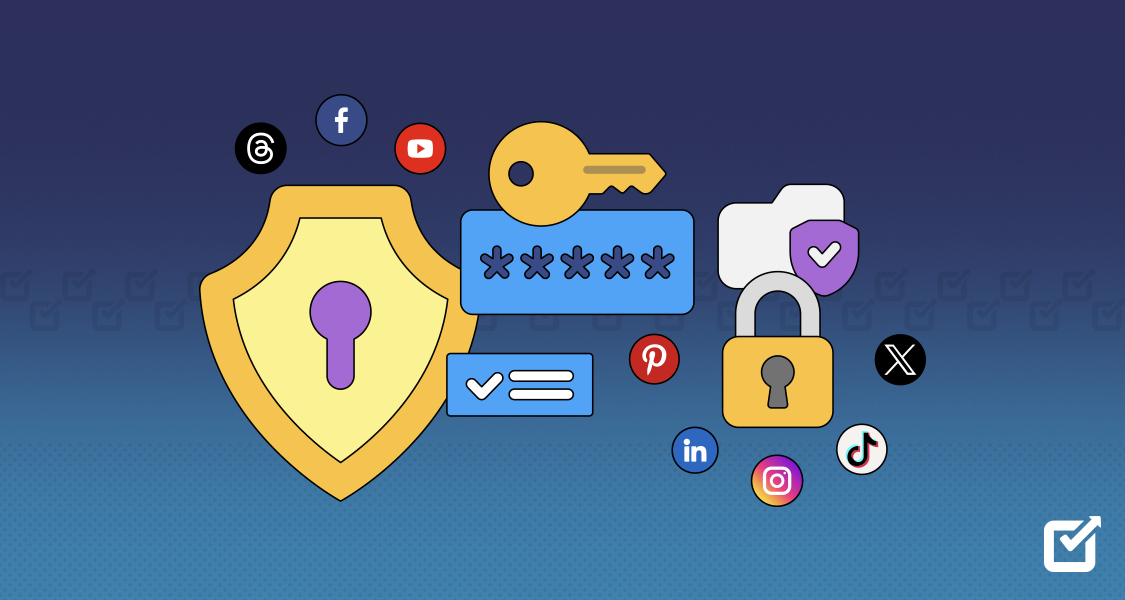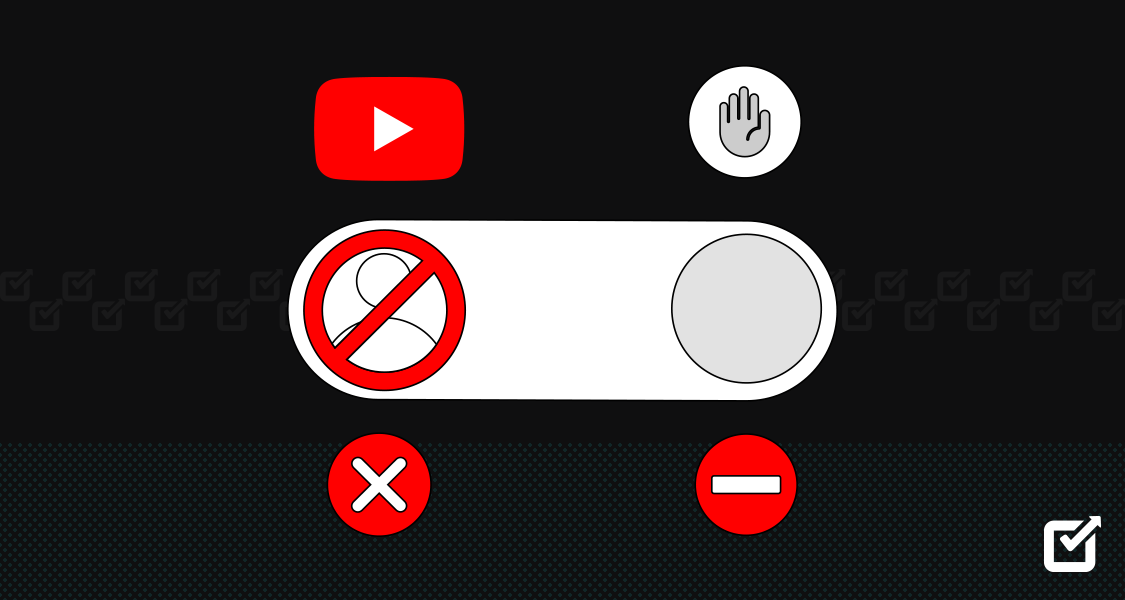Running a business in 2024? It’s a rollercoaster, but one thing’s for sure: community engagement is critical.
Forget about just tossing out a survey or two. Nowadays, it’s all about creating a real space where your customers feel like they belong as a part of a community! With everyone glued to their phones, genuine connections are what turn window shoppers into your biggest fans.
So, whether you’re a corner store or a global corporation, getting down to business with your community can do wonders for your brand.
In this guide, we will teach you all the ways you can keep your community engaged. But before we start, here’s a little insider tip: get yourself a social media management tool to stay on top of all community interactions!
What Is Community Engagement?
Community engagement, in simple terms, is all about creating a lively, back-and-forth conversation with your audience. This means using social media not just for posting but for genuine conversations. It’s important to talk, listen, and respond thoughtfully to what your community has to say.
Adding personal touches to communication is key. Whether through emails, direct messages, or comments, personal interactions can make each community member feel seen and valued. This approach doesn’t just build stronger connections between individuals; it helps the whole community feel more united and engaged.

Using tools like polls, quizzes, and questionnaires is also valuable. They’re not just for fun; they encourage everyone to get involved and share their thoughts. This participation lets you gather insights on your audience’s likes, helping you adjust your content and strategies to suit their preferences better.
Related Article: 25+ Social Media Best Practices to Follow in 2024
How Community Engagement Works
Here’s the thing—community engagement is all about ensuring a two-way conversation. It’s not enough to just throw messages into the world and hope for the best. You’ve got to use tools like social media to talk, listen, and respond to what people are saying.
Personal touches, like emails or one-on-one messages, make everyone feel important. And don’t forget about things like polls or quizzes that get people more involved. It’s all about making sure everyone’s part of the discussion.
Make Data-Driven Decisions with Social Champ!
Use Social Champ’s Analytics to see what works and make smarter decisions. Get started now and take your engagement to the next level!
More Than Just Buying and Selling
The real magic of community engagement happens when businesses move past just selling stuff and start building lasting relationships. This means opening up a channel where both sides can talk freely. This back-and-forth is a goldmine for brands because it lets them hear directly from their customers about what’s working and what’s not. It’s a chance to fine-tune what you offer to really match what people want.
Turning Customers Into Fans
When people feel closely connected to a brand, they don’t just buy—they become champions for the brand. They’ll talk about their positive experiences and recommend you to others without you having to ask. This kind of word-of-mouth is super effective because it’s genuine. Plus, these loyal fans will stick with you, offer helpful feedback, and even defend your brand if needed.
Growing Together
In the end, community engagement is all about growing together—your business gets better and stronger, and your community feels like they’re truly part of something. It’s not just about making more money; it’s also about improving your products, customer service, and how people see your brand. For your community, it’s about feeling heard and valued. This shared success strengthens the bond between you and your community, making everyone feel like winners.

Why Community Engagement Is Important?
Now more than ever, community engagement is key to a brand’s success. It makes customers feel like they’re part of something bigger, helps build trust, and ensures your brand’s message really sticks with people. In today’s ultra-competitive market, rallying a community around your brand could be what sets you apart.
Why Community Engagement Matters
Getting your customers to stick around isn’t just nice; it’s essential. When people feel connected to your brand, they’re less likely to jump ship for a competitor. They become loyal followers and are more likely to buy from you again.
But community engagement is not just about holding onto customers. A strong community supports your business’s growth in natural ways, like through word-of-mouth. Happy customers are your best advocates, telling their friends and family about you. On top of that, they can give you priceless feedback, helping you come up with new ideas or improve what you already do.
Building Trust
Customers support brands that are genuine and transparent. By engaging with your community regularly and in meaningful ways, you show that you’re committed to more than just making a sale. This kind of honesty builds trust, making your brand more appealing to both new and existing customers.
Innovation
Your community is a goldmine of ideas. By listening to them, you can uncover what people really want and get inspired to create new products or improvements that truly resonate with your customers. This collaboration not only brings your offerings closer to the mark but also makes your community feel valued and heard.
Saving on Marketing and Support
An engaged community offers benefits beyond just sales and feedback. It can also be a more cost-effective way to market your brand. When your customers create content about you or recommend you to others, it’s like free advertising.
Plus, a community where users help each other out can cut down on your customer service costs, solving problems faster and making everyone happier in the process. By building a strong, engaged community, you’re not just boosting sales—you’re creating lasting relationships that can propel your brand to new heights.
Featured Article: 15 Best Social Media Marketing Podcasts for Online Marketers
Maximizing Community Engagement: Tips and Tactics
Getting the most out of community engagement is a big opportunity for your business. It goes beyond just getting your name out there; it’s about creating real connections with people who interact with your brand. To make this happen, you need a smart plan. Here’s how to put together and roll out a strategy that works:
Know Where Your People Are
The first step is figuring out where your audience likes to hang out. Are they scrolling through Instagram, debating in forums, or maybe attending local events? Knowing where they spend their time will help you understand the best places to engage with them.
Find and Support Your Champions
Every community has a few stars, people who already love what you do and talk about it to others. Find these folks and give them a little boost — maybe it’s access to exclusive content or a shoutout on your channels. Their genuine support can help spread the word about your brand more effectively.
Tailor Your Approach
Everyone wants to feel like you’re talking directly to them. Use tools and data to gain insights into your audience’s interests, and then use that information to customize your messages. This could mean different posts for different platforms or personalized emails.

A snapshot of Social Champ’s community Offer Valuable Content
What you share with your community should be something they find helpful or interesting. These could be tips, stories, or insights that matter to them. Also, getting ideas from your audience or having them contribute can make them feel even more connected to your brand.
Be There Regularly
It’s not enough to show up once and disappear. Being a consistent part of your community makes your brand reliable and memorable. This means regular posts, replies to comments, and showing up at events or webinars.
Measure and Adapt
Finally, monitor the success of your efforts. Track engagement metrics like shares, comments, and participation rates to determine what’s working and what isn’t. Based on this feedback, pivot your strategy to refine and improve your community engagement efforts continually.
Putting together a community engagement strategy might seem like a lot, but breaking it down into these steps can help you build a strong relationship with your audience. This not only boosts your brand now but also lays the groundwork for future success.
Related Article: How Does the YouTube Algorithm Work in 2024: A Comprehensive Guide
Best Practices for Community Engagement
Putting these key actions into your community engagement plan can lead to stronger, deeper relationships:
Build a Team Spirit
Make sure there’s a real sense of partnership between your brand and the people who support it. This means being open about what you’re trying to achieve and the hurdles you face, as well as inviting your community to help find ways forward. Working together like this doesn’t just bring new ideas; it also tightens the connection with your fans.
Add Value Every Time You Connect
Whether you’re writing a blog post, hosting a webinar, or just replying to a comment online, always offer something useful. It could be tips, a good laugh, or a solution to a problem they have. If people see they get something worthwhile from you every time, they’ll keep coming back.
Show Gratitude
A simple show of gratitude can go a long way. Recognize and appreciate the efforts your community makes to support and contribute to your brand. A little thank you can make people feel valued and more inclined to keep engaging with your brand.
Keep It Real
In a world full of hype, being genuine stands out. Be honest in how you engage with your community. If things go wrong, own up to it. This kind of transparency builds trust and shows that your brand is run by honest, relatable people.
Provide the Tools They Need
Help your community get the most out of your products or services by giving them the right information and tools. Whether through guides, FAQs, or direct support, an informed community is more engaged and supportive.
Keep the Energy Up
Community engagement isn’t a one-time deal—it should be part of your ongoing strategy. Keep the conversations going, start new ones, and keep the vibe positive. Regular interaction keeps people interested and invested in your brand.
Implementing these practices into your engagement strategy lays the groundwork for a dynamic and loyal community. Shifting to a more relationship-focused approach enriches your audience’s experience and fosters a healthy, engaged community that supports your brand over the long haul.
How to Improve Community Engagement
If you’ve already considered the strategies mentioned above for improving community engagement, here are additional tips and best practices that can further enhance your efforts:
Celebrate Milestones and Successes
- Recognize significant milestones for both the community as a whole and individual members.
- Highlight how the community or its members have achieved goals, overcome challenges, or contributed to causes.
Create Exclusive Content or Events
- Create exclusive content, events, or forums accessible only to community members, adding value to membership.
- Invite experts or influential figures for Q&A sessions exclusive to your community.
Personalize Interactions
- Tailor communications and content based on different segments of your community to increase relevance.
- Personalize your replies by using the member’s name when responding to comments or messages.
Encourage User-Generated Content
- Motivate members to create and share content related to your brand or community theme.
- Share user-generated content on your platforms, giving credit to the creators.
Implement Feedback Loops
- Show that you value feedback by implementing sensible suggestions from the community.
- Inform your community about how their input has influenced changes or improvements.
Create a Safe and Inclusive Environment
- Promote respectful interactions by setting and enforcing community guidelines.
- Encourage diverse perspectives and ensure all community members feel welcome and valued.
Offer Incentives for Participation
- Recognize and reward contributions through acknowledgments, badges, or tangible rewards.
- Encourage members to invite others to join the community by offering incentives for successful referrals.
Continuously Innovate
- Try new content or engagement activities to keep the community experience fresh and exciting.
- Keep an eye on emerging trends in community engagement and integrate relevant ones into your strategy.
Incorporating these additional tips into your community engagement strategy can lead to a more vibrant, active, and satisfied community. Remember, the key is to remain authentic, listen actively, and continuously seek ways to add value to your community members’ experiences.
Handling Challenges in Community Engagement
Managing a community can come with some challenges, such as the following:
Dealing with Negativity
Negativity can arise in any community. Therefore, you must have well-defined policies and moderation processes to address offensive content swiftly and effectively. Encouraging positive behaviors and setting community standards can also mitigate issues before they occur.
Adapting to Change
Communities, like all things, change over time. Your strategies should be adaptable to growth, platform shifts, and user behavior changes. Regularly review your engagement approaches to ensure they remain relevant and effective.
Conclusion
By this time, it’s clear how crucial community engagement is for businesses in 2024. It’s essential for everything from marketing to creating new products. Putting effort into your community is more than just making people happy—it’s a wise choice that leads to stronger loyalty, more support, and new ideas.
Take the time to really engage with your community, hear what they have to say, and grow together. This approach won’t just keep your customers around—it will also help your business succeed in the long run.










